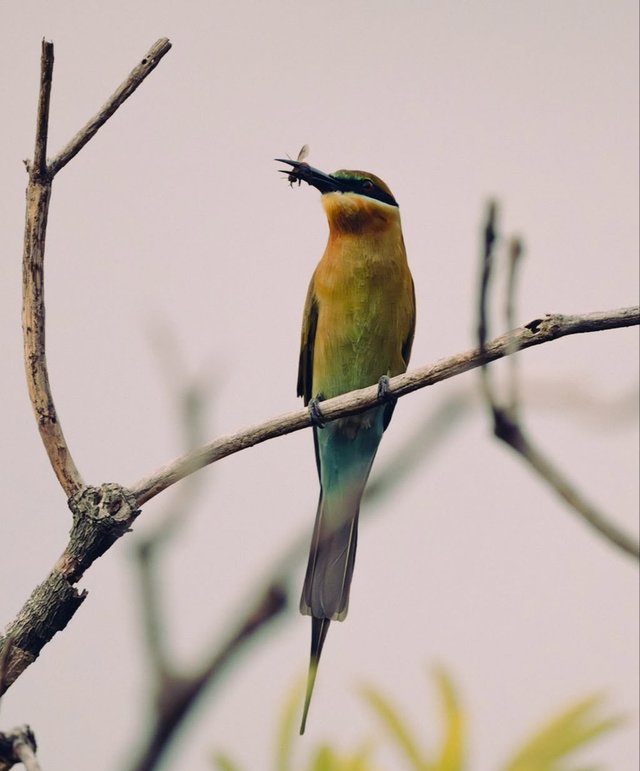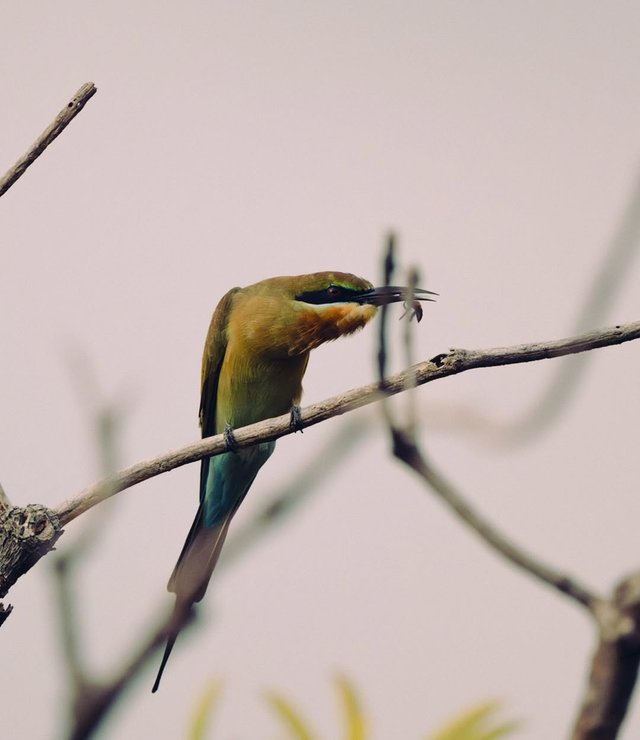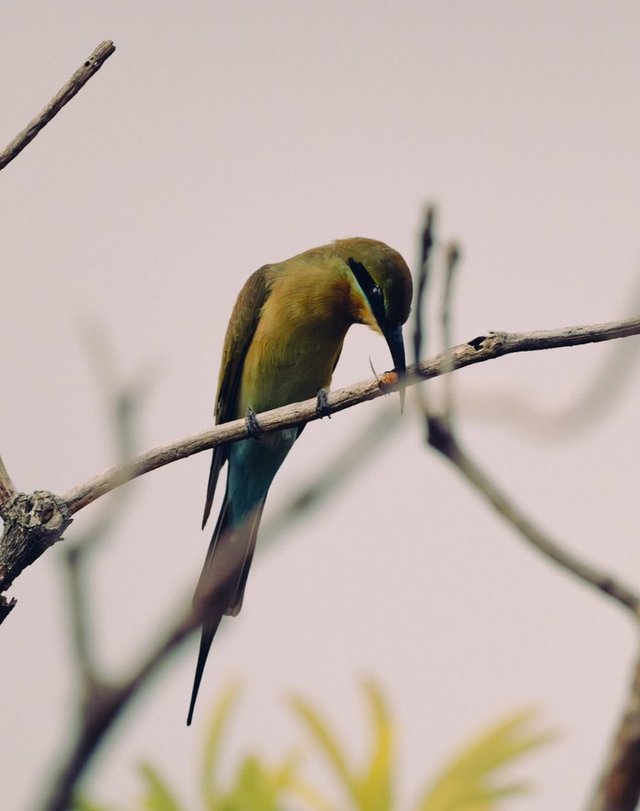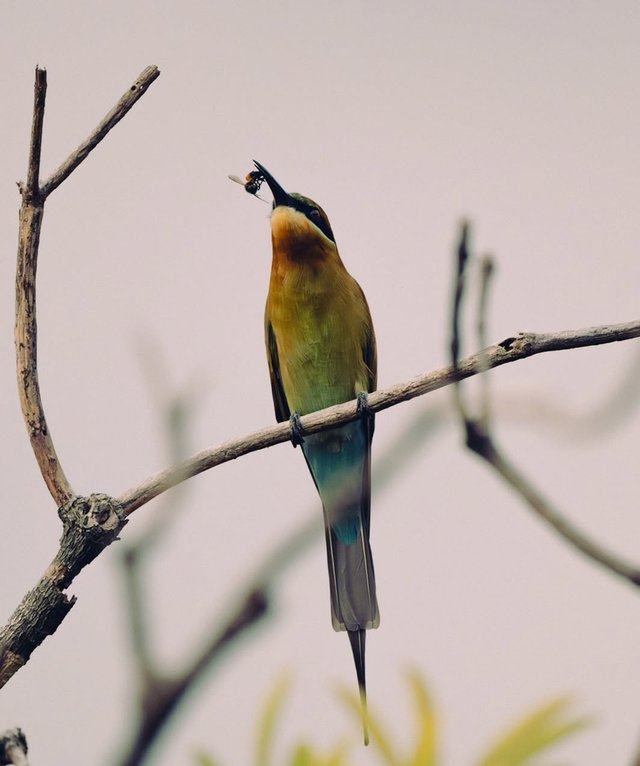Beautiful Blue-Tailed Bee-Eater Flower
The is a dazzling and graceful bird that embodies the vibrant energy of tropical landscapes. With its slender body, long curved bill, and shimmering plumage, this species is a living jewel often seen darting through the sky in pursuit of insects. Native to South and Southeast Asia, the Blue-tailed Bee-eater is a familiar yet captivating sight near rivers, grasslands, wetlands, and open forests—anywhere insects thrive in abundance.
This bird stands out with its brilliant coloration: a mix of emerald green, golden brown, and a striking blue tail that gives it its name. Its throat glows with a patch of bright yellow or orange, bordered by a delicate black line that accentuates its sharp, expressive eyes. When sunlight catches its feathers, the iridescent hues shift and shimmer, making it a true spectacle in flight.
As its name suggests, the Blue-tailed Bee-eater has a particular fondness for bees, wasps, and other flying insects. It’s a master aerial hunter—swift, agile, and precise. From a perch on a tree branch or electric wire, it watches keenly for movement, then swoops into the air to snatch its prey mid-flight. Before eating a bee or wasp, it skillfully removes the stinger by striking the insect against a hard surface, a behavior that showcases its intelligence and adaptability.
These birds are highly social, often seen in small flocks during the non-breeding season. During breeding time, they gather in colonies and dig nesting burrows into sandy riverbanks or coastal cliffs. Each pair works together to excavate a tunnel that may reach up to a meter in length, leading to a small chamber where eggs are laid. Both parents share responsibilities in incubating the eggs and feeding the chicks—a true display of cooperation and family care.
Beyond their beauty, Blue-tailed Bee-eaters play an essential ecological role. By feeding on bees, wasps, and other flying insects, they help regulate insect populations, maintaining a natural balance in the ecosystem. Their presence is also an indicator of healthy, biodiverse environments.
The Blue-tailed Bee-eater is migratory, traveling across large distances in response to seasonal changes. Populations from northern regions migrate south during the winter, following the monsoon patterns and availability of food. Watching their synchronized flight across the sky, wings shimmering under the sun, is a breathtaking reminder of the wonders of avian migration.
In folklore and local cultures, these birds are often admired for their grace and beauty. Their vibrant colors and lively behavior symbolize freedom, harmony, and the vitality of nature. Photographers and bird enthusiasts cherish encounters with them, especially during nesting season, when their colonies bring life and color to riverbanks and coastal zones.
The is more than just a feast for the eyes—it is a messenger of ecological balance, a skilled hunter, and a traveler of great distances. Its vibrant presence in the landscape is a vivid reminder of how intricate and interconnected life on Earth truly is. Watching one in flight—its blue tail trailing like a ribbon through the air—is to witness a small miracle of nature in motion.
Thanks For Reading
Device Information
| Device | Redmi Note 10 Pro |
|---|---|
| Lens | 64 mp |
| Location | Bangladesh |





@jarintasmin, what a wonderfully vibrant post about the Blue-tailed Bee-eater! Your descriptions truly capture the beauty and grace of this jewel-toned bird. The detail about how they skillfully remove stingers is fascinating – a testament to their adaptability!
The photographs are equally stunning, perfectly showcasing their iridescent plumage and capturing their lively essence. It's fantastic how you've woven together their ecological importance, social behavior, and cultural significance. This post is a delightful blend of information and visual appeal.
Thanks for sharing this piece of natural wonder from Bangladesh! Has anyone else had the pleasure of observing these birds in their natural habitat? What other fascinating behaviors have you witnessed? Let's discuss!